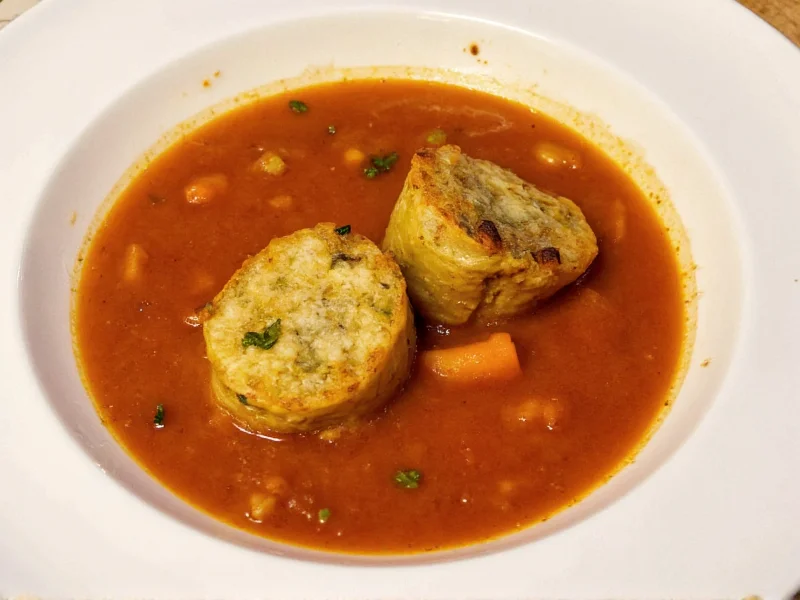The Heartwarming Tradition of Stuffed Cabbage Soup
Stuffed cabbage soup, known as holubtsi in Ukrainian or gołąbki in Polish, represents centuries of Eastern European culinary heritage. This simplified version of traditional cabbage rolls transforms the labor-intensive dish into an accessible weeknight meal without sacrificing authentic flavor. Unlike whole cabbage rolls, this soup format allows all ingredients to meld perfectly while reducing preparation time significantly.
Essential Ingredients for Perfect Stuffed Cabbage Soup
Quality ingredients make the difference between ordinary and exceptional stuffed cabbage soup. This easy stuffed cabbage soup recipe uses readily available components that create complex flavors through proper technique.
| Ingredient | Quantity | Preparation Notes |
|---|---|---|
| Green cabbage | 1 large head (2-3 lbs) | Core removed, thinly sliced|
| Ground beef | 1 lb (80% lean) | Substitute ground turkey for lighter version|
| Long-grain white rice | 1 cup | Rinse before adding to soup|
| Tomato sauce | 28 oz can | No sugar added preferred|
| Beef broth | 6 cups | Low-sodium for better control|
| Yellow onion | 1 large | Finely diced|
| Garlic cloves | 3 | Minced|
| Bay leaves | 2 | Remove before serving|
| Smoked paprika | 1 tsp | Essential for authentic flavor
Step-by-Step Preparation Guide
Follow these detailed instructions for the best stuffed cabbage soup recipe that captures traditional flavors with modern convenience.
- Brown the meat: In a 6-quart Dutch oven, cook ground beef and diced onion over medium heat until no pink remains (about 8 minutes). Drain excess fat.
- Add aromatics: Stir in minced garlic, smoked paprika, 1 tsp black pepper, and 1 tsp caraway seeds. Cook for 1 minute until fragrant.
- Layer ingredients: Add rinsed rice, tomato sauce, beef broth, and bay leaves. Bring to a gentle boil.
- Incorporate cabbage: Reduce heat to low, add sliced cabbage, and stir gently to submerge.
- Simmer to perfection: Cover and simmer for 60-75 minutes until cabbage is tender but not disintegrated and rice is fully cooked.
- Final seasoning: Remove bay leaves, adjust salt to taste, and stir in 2 tbsp apple cider vinegar for brightness.
Pro Tips for Exceptional Results
Master this traditional stuffed cabbage soup with these professional techniques:
- Cabbage selection: Choose firm, heavy heads with crisp outer leaves. Avoid any with yellowing or soft spots.
- Rice timing: For distinct grains, add rice 15 minutes after cabbage in the simmering process.
- Acidity balance: The apple cider vinegar at the end balances richness—don't skip this crucial step.
- Texture control: For thicker soup, mash some cabbage against the pot side during cooking.
- Flavor development: Let soup rest for 15 minutes off heat before serving to allow flavors to meld.
Variations for Different Dietary Needs
This versatile cabbage roll soup recipe adapts beautifully to various preferences:
Vegetarian Stuffed Cabbage Soup
Replace beef with 2 cups cooked lentils and use vegetable broth. Add 1 diced carrot and 1 diced celery stalk when sautéing onions for additional depth.
Slow Cooker Method
After browning meat and sautéing aromatics, transfer everything to a slow cooker. Cook on low for 6-7 hours or high for 3-4 hours. Add cabbage during the last 2 hours.
Smoked Flavor Enhancement
Add 1 strip of cooked bacon (chopped) or ½ tsp liquid smoke for a campfire-inspired variation of this Hungarian stuffed cabbage soup recipe.
Serving Suggestions and Storage
Traditional Eastern European accompaniments elevate your stuffed cabbage soup experience:
- Serve hot with a dollop of sour cream and fresh dill
- Pair with dark rye bread for dipping
- Garnish with additional black pepper and fresh parsley
- Store in airtight containers for up to 5 days in the refrigerator
- Freeze portions for up to 3 months (thaw overnight before reheating)
Reheat gently on the stove over medium-low heat, adding a splash of broth if needed. The flavors deepen when reheated, making this an excellent make-ahead meal for busy weeks.
Frequently Asked Questions
Can I use pre-shredded cabbage for stuffed cabbage soup?
Yes, you can substitute 8 cups of pre-shredded cabbage, but fresh cabbage provides better texture and flavor. If using pre-shredded, add it later in the cooking process (about 30 minutes before serving) to prevent overcooking.
Why does my stuffed cabbage soup taste bitter?
Bitterness typically comes from overcooked cabbage or insufficient acid. Add 1-2 tablespoons of apple cider vinegar or lemon juice at the end of cooking to balance flavors. Avoid boiling the soup vigorously, which can release bitter compounds from the cabbage.
How can I make stuffed cabbage soup thicker?
For a thicker consistency, remove 2 cups of soup, blend until smooth, then return to the pot. Alternatively, simmer uncovered for an additional 15-20 minutes to reduce liquid, or mash some of the cooked cabbage against the pot's side.
What's the difference between stuffed cabbage soup and cabbage roll soup?
These terms are often used interchangeably. Traditional cabbage roll soup refers to the deconstructed version of cabbage rolls, which is exactly what this stuffed cabbage soup recipe provides. Both feature the same core ingredients but in soup form rather than rolled.
Can I prepare stuffed cabbage soup in advance?
Absolutely. This soup actually improves when made 1-2 days ahead. Prepare as directed, cool completely, then store in the refrigerator. Reheat gently on the stove, adding broth if needed. The flavors meld beautifully during storage.











 浙公网安备
33010002000092号
浙公网安备
33010002000092号 浙B2-20120091-4
浙B2-20120091-4